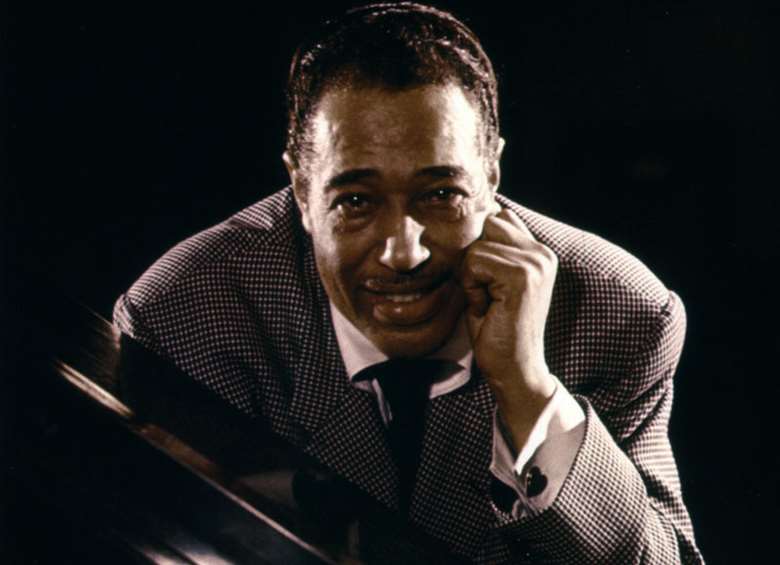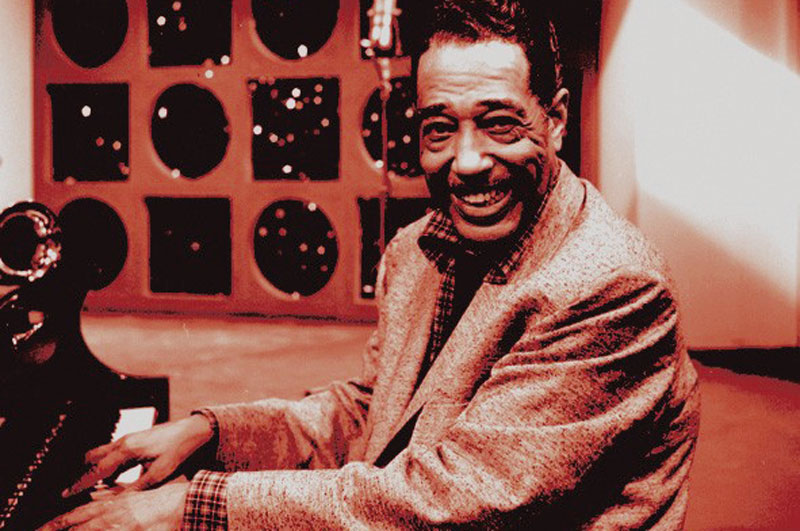Such Sweet Thunder: inside Duke Ellington's literary world
Tuesday, July 18, 2017
A crucial but frequently overlooked aspect of Duke Ellington's creative life was his engagement with literature.

From Shakespeare to Steinbeck, Ellington's love of the written word inspired much of his late music, as Lana Crowe reveals
Duke Ellington was an artistic polymath, displaying a talent for writing, painting and theatrical production in addition to his abundant musical talent. Much of Ellington’s written work has remained unpublished, perhaps because – as he admitted to Richard O. Boyer during an interview for The New Yorker – “you can say anything you want on the trombone, but you gotta be careful with words”. For this reason, his literary legacy has gone widely unacknowledged, particularly when compared with the abundance of writing on his catalogue of music. Ellington’s interest in literature is, in fact, discernible in both his literature-inspired musical compositions and, indeed, his own writing.
Ellington’s eclectic memoir Music is My Mistress is a rich and insightful text, full of accounts of his extensive time on the road, short poems, descriptions of the many important people in his life, and a variety of other musings that provide a glimpse into his complex and energetic mind. A personal favourite is a chapter entitled ‘The Taste Buds’, in which Ellington (notoriously a man of large appetite) advises the reader on the best places to acquire a variety of food, from Räk Crêpe in Sweden to Poppets in London to baked beans in Harry Carney’s mother’s house. However, it is Ellington’s poetic aspirations that truly enlighten his holistic artistic ability. His most significant surviving poem was written to accompany his pioneering 1943 composition Black, Brown and Beige. Despite the vast critical interest in the avant-garde musical composition, the full poetic text of Black, Brown and Beige remains unpublished, residing only in the Archives Centre of the National Museum of American History in Washington D.C..
Though never published – it gained exposure only through the publication of extracts in Music is My Mistress, and having been adapted into an unsuccessful musical (My People) and an unrealised jazz opera (Boola) – Ellington scrupulously edited and reworked the poem, once going so far as to suggest that “the script itself is more interesting than the music”. The poem undoubtedly deserves to be read as a serious work of African-American modernist literature. It follows the journey of Boola, an African-American Everyman, from freedom in Africa to slavery in America, before culminating in a poetic depiction of contemporary Harlem. The poem is saturated with American literary culture – alluding to the work of Langston Hughes, Eugene O’Neill, Walt Whitman and T.S. Eliot, amongst others – and is an enlightening, maybe even crucial, accompaniment to the musical composition, as well as a valuable literary text in its own right.
“It is easy to imagine that Shakespeare would have felt an affinity to Ellington’s rejection of generic boundaries”
Ellington’s interest in literature extends to a number of musical compositions that were based on literary texts, the most notable being Such Sweet Thunder, a suite entirely inspired by the works of William Shakespeare. Ellington’s ambitious attitude towards jazz has elicited comparisons with Shakespeare: he is a figure in jazz of Shakespearean proportion, and critics have written of his music as having “a truly Shakespearean universality”. The harmony of the Ellington/Strayhorn writing partnership can make it difficult to discern who composed what – “a whodunit game indulged in by the band”, in Strayhorn’s words – much as the ongoing debates about Shakespearean authorship seek to determine the contribution of contemporaries like Christopher Marlowe and Thomas Middleton to Shakespeare’s works. It is easy to imagine that Shakespeare would have felt an affinity to Ellington’s rejection of generic boundaries; the composer considered artistic categories to function like an echo chamber, used “by a person who feels that the one he’s talking to doesn’t know enough about the language in which he speaks”.
Ellington eschewed the boundaries of jazz by using typically classical forms, creating jazz arrangements of classical suites, and referencing classical music in his more conventional jazz compositions just as, 350 years earlier, Shakespeare put deaths in comedies, jokes in tragedies and thrived in the instability of genre that was characteristic in Early Modern theatres. “Somehow,” wrote Ellington, in the programme notes of the 1956 Stratford (Ontario) Shakespeare Festival, “I suspect that if Shakespeare were alive today, he might be a jazz fan himself – he’d appreciate the combination of team spirit and informality, of academic knowledge and humour, of all the elements that go into a great jazz performance”.
According to Derek Jewell, Ellington and Strayhorn “read and re-read all the plays as thoroughly as Duke had once gone through the Bible”, research that is discernible in the playful yet complex interpretation of Shakespeare’s plays found in Such Sweet Thunder. Ellington and Strayhorn create distinctive characterisations through, for example, the gradual crescendo of the elegant jazz-waltz ‘Lady Mac’, or the unpredictable phraseology and wincing high-pitch trumpet (courtesy of Cat Anderson) in the Hamlet-inspired ‘Madness in Great Ones’. The title track of the suite, despite quoting A Midsummer Night’s Dream, is in fact an interpretation of Act One Scene Three of Othello, a musical rendition of “the battles, sieges, fortunes” that Othello recounted to Desdemona during their courtship – a tale that, as Ellington often joked, must have been one swinging story.
‘The Star-Crossed Lovers’ is the suite’s Romeo and Juliet-inspired piece: a duet between Johnny Hodges on alto saxophone, who dominates the piece as Juliet, and Paul Gonsalves on tenor as Romeo. It is no coincidence that the opening recalls the first chord of ‘Sophisticated Lady’: the dominance of Juliet’s voice in the piece is a comment on the relationship between the young lovers in the play. Juliet often anticipates Romeo’s dialogue – “Dost thou love me? I know thou wilt say ‘Ay’” – and becomes so instructive that Romeo’s behaviour becomes an expression of Juliet’s desires. ‘The Star-Crossed Lovers’ is Romeo and Juliet told from Romeo’s perspective: infatuated with and subjugated to his sophisticated lady. There is even a respect for poetic form evident in the four musical ‘sonnets’, which are made up of fourteen ten-note phrases following the rhythm of iambic pentameter, each with the capacity to be played alongside a spoken Shakespearean sonnet without alteration. An occasion on which the revered Shakespearean actor Richard Burton recited Shakespeare while Ellington “stroked the keys” produced “one of the greatest theatrical experiences that [he] ever had”.
Another significant example of Ellington and Strayhorn’s literature-inspired compositions is Suite Thursday: the suite is a reading of John’s Steinbeck’s novellas Cannery Row and Sweet Thursday, which depict life on America’s Pacific coast before and after the Second World War. Though initial reception of Suite Thursday was wanting, it has since garnered critical acclaim for its “evocation of literary mood and character”. It was first issued, in a revised form, alongside Ellington’s arrangement of Edvard Grieg’s Peer Gynt suite. Perhaps it was the controversy surrounding Ellington’s interpretation of Peer Gynt – the Grieg Foundation barred the arrangement in Norway, a condemnation of jazz and Ellington’s attempt to push its boundaries – that led the artistic ambition of Suite Thursday to fade into obscurity.

Cannery Row opens with a question about literature’s ability to truly capture a place: “how can the poem and the stink and the grating noise – the quality of light, the tone, the habit and the dream – be set down alive?”. It is unsurprising that Ellington, the master of musical portraiture, read this as a challenge. The suite opens with a foghorn-like trombone phrase, followed by a dreamy piano depiction of the “quiet and magical” life in Cannery Row. Steinbeck’s aural similes, such as how “the evening crept in as delicately as music” are honoured in the suite. It is in the second movement, ‘Schwiphti’, that the orchestra depicts the cacophony of Cannery Row: the brass section squeals as the “cannery whistles scream”, and the up-tempo discord throughout the movement captures the “rumbles and groans and screams and rattles” of pre-war Cannery Row coming to life each morning. Although the suite does not presuppose knowledge of the source material, the literary aspect of the suite enhances both the texture of the music and diversifies the denotation of Steinbeck’s texts.
Duke Ellington moved in literary circles: he was personal friends with writer and social activist Langston Hughes, and publicly praised his political poem ‘I, Too, Sing America’. Through Hughes, Ellington was introduced to a young Ralph Ellison, whose 1952 novel Invisible Man has gone on to become a seminal work of twentieth-century American literature. According to Ellison, Duke Ellington “influenced even those who had no immediate concern with the art of jazz”. This undoubtedly included a large number of poets and novelists: his presence is evident in works from Boris Vian’s surrealist French novel L’Écume des Jours to Geoff Dyer’s imaginative jazz criticism But Beautiful. As a self-declared forerunner in the “increasing interrelationship between the adherents to art forms in various fields”, Duke Ellington understood the importance of one seemingly simple yet sophisticated principle in both music and literature: “when it sounds good, it is good”.
Explore: Duke Ellington's finest year
To find out more about subscribing to Jazzwise magazine, please visit: www.jazzwisemagazine.com/subscribe